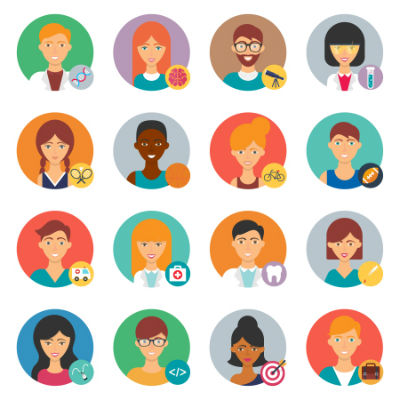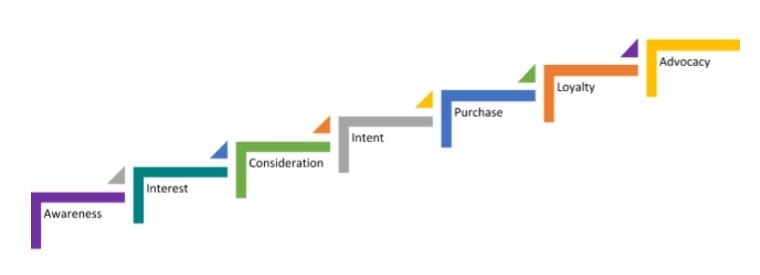- Data Services
- Fraud Prevention
- Solutions
- Resources
- About Us
- Login
- Talk to an expert
- Try us for free
Oct 29, 2015 | 5 min read

 Email is the strongest owned marketing channel a business can leverage. It’s the preferred contact method for many customers and, given the ever-growing popularity of mobile, most of us are only an arm’s length from our inboxes at any given time. But to truly harness the power of email, brands need to utilize email list segmentation.
Email is the strongest owned marketing channel a business can leverage. It’s the preferred contact method for many customers and, given the ever-growing popularity of mobile, most of us are only an arm’s length from our inboxes at any given time. But to truly harness the power of email, brands need to utilize email list segmentation.
Segmented email lists perform better across key metrics like unique opens, clicks and abuse reports. But exactly what criteria should you use to segment your list, and how should you go about it? Read on to discover the answers to these important questions.
Buyer personas, or fictional archetypes of your buyers based on data, are developed to help you deliver the right content to the right people.
If you’re not segmenting your email list based on your buyer personas, you’re missing out on one of the biggest advantages of having them in the first place. Details about your client archetypes, like what they like to do in their leisure time, can inform the way you approach them; and so can relevant details like the way they typically interact with your offering. Personalized email scores higher and, despite its name, one-size-fits-all fits no one. That’s why you have to segment.

Start by gathering data. Email sign-ins and surveys are a great way to get the information you need to develop more accurate, varied buyer personas. Interactive content like webinars can also provide an opportunity to gather data. When you have it, use it to construct detailed buyer personas and segment your list based on this criteria.
Your buyers are in different places within the funner, or buyer’s journey. Not everyone is a fresh contact; not everyone is at the point of purchase.
This matters because people in different stages of the funnel need to be emailed different types of content.

Automated email workflows allow you to accurately target consumers based on where they are in the funnel. In this way, customers are able to segment themselves based on the content with which they interact, dropping themselves into pre-created email workflows based on trigger events.
For example, a prospect who accesses multiple top-of-funnel pieces of content, like blog posts, may benefit most from an email encouraging them to move on to more mid-funnel offers, such as a video series or a downloadable eBook. Customers hovering around the top of the funnel post-purchase can be retargeted with offers, such as coupons for follow-up purchases.
Depending on your products and services, you may have customers from various different industries.
Each industry may purchase a different product, or have different uses for the same product. The product and the features remain the same but, what they’re getting from it – the benefits – are not. Customers need to be approached in terms of benefits.
Look to the types of content each industry uses on as customers move through the buyer’s journey. If your engineering clients primarily read whitepapers while your warehousing clients prefer actionable, short lists, you know which content to email new customers from each industry.
Additionally, think about how you can gain ready-made insights from different channels, and utilize this information when building email campaigns. This is where you can harness the power of various marketing technology tools. For example,
Upselling, cross-selling and soliciting reviews and advocacy through social sharing are just a few things businesses try to earn from new customers after a purchase.

However, few realize that your customers’ past purchase behavior can predict their future purchase behavior, too. In The Complete Idiot’s Guide to Psychology, author Joni Johnstone points out that, when it comes to human beings, the most reliable indicator of future behavior is past behavior.
Past purchase behavior is data you have on all your customers. Predicting their behavior is only half the benefit, though: cross-referencing past customers with leads can also help predict the buying behavior of new leads.
Use collateral content to solicit survey responses from previous purchasers about the benefits they derived from your offering and what they’d like to see in future, or on the next iteration. Then, cross-reference that data with sales data and optimize your approach to suit your most valuable clients.
To prevent email spam – or at least, to keep it down to its present rate and stop it swallowing the whole internet – mailboxes report recipient behavior toward email from different IP addresses.
Sending the wrong email to the wrong recipient can trash your sender reputation and get you slapped with a spam notice. (You can find out what your email sender score is at senderscore.org.) Improving a low score is one of the benefits of a well-segmented email list, and increasing engagement is another.
Segmenting your email list based on geography makes sense. For example, if some of your customers live in Japan and some in New England, that’s an 11-hour time difference. It doesn’t make sense to send out emails at the same time. Even if your customer base is only spread out across one city, or the biggest dividing line is between two bordering states, there may still be geographic differences.
“How about those Yankees?” is just the wrong message to send to customers from Brooklyn (or anywhere else, some days, but that’s another story).
Additionally, if your business deals in local offerings, geographic segmentation by district or even street can deliver benefits if it can be paired with service delivery information. You can use dynamic content to address what Neil Patel calls micro-segmentation.
Segmenting your email list is the best way to get the most mileage out of digital marketing’s best tool. You’ll deliver more relevant content to your contacts, which in turn encourages engagement, clicks and conversions, and safeguards your sender reputation.
Are you ready to supercharge your email list segmentation? Get the data you need to create powerful campaigns with InstantData!
{{cta(‘317ed7e1-f0b1-4b0b-b588-76e0de73e4b4’)}}